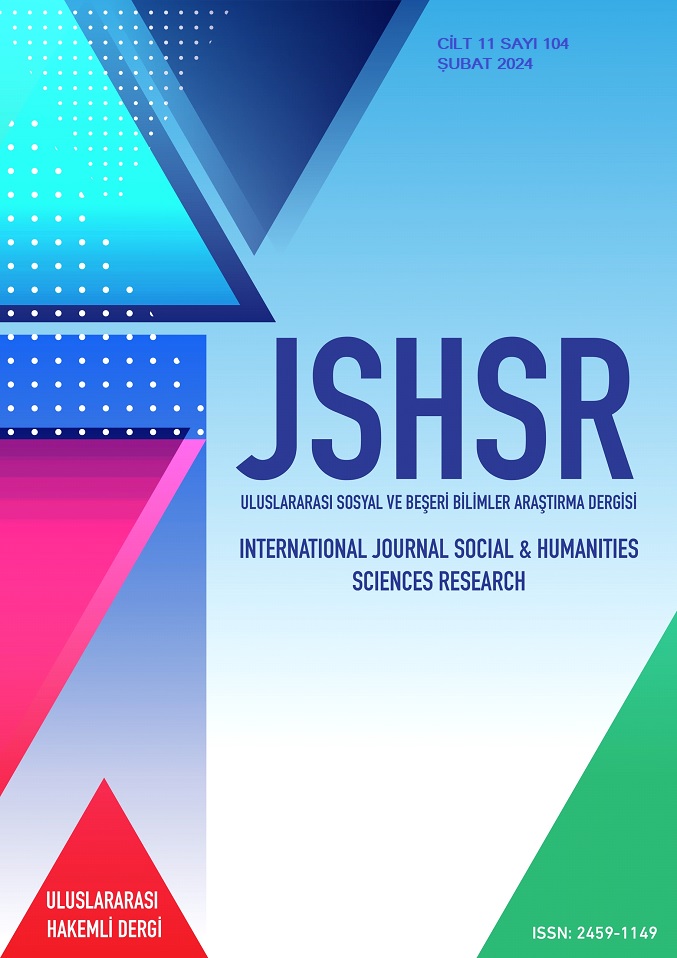Yetişkinlerde Yabancı Dil Öğrenimine İlişkin Nörodilbilimsel Bir İnceleme
DOI:
https://doi.org/10.5281/zenodo.10737094Keywords:
Yetişkinlerde İkinci dil öğrenimi, Yabancı dil olarak Türkçe, Beyin Lokalizasyonu, fMRI, NörodilbilimAbstract
Bu disiplinler arası çalışmanın amacı ikinci dil öğrenen yetişkin bireylerin ikinci dil öğrenimi sürecine ilişkin somut verilere dayalı Nörodilbilimsel bir inceleme yapmaktır. Çalışma, Indiana Üniversitesi Turkish Flagship programında Türkçeyi yabancı dil olarak öğrenen başlangıç düzeyindeki 10 öğrenci üzerinde yürütülmüştür. 6 ay boyunca yoğun (intensive) Türkçe eğitim alan katılımcılara periyodik olarak seviye belirleme testi yapılmıştır. Hemen ardından katılımcılar uygulama odasına alınmış ve kelime, kelime/cümle-resim eşleştirme ve dilbilgisi testleri uygulanmıştır; eş zamanlı olarak da beyin görüntüleme tekniklerinden fMRI kaydı alınmıştır. Çalışma sonunda yabancı dil olarak Türkçe öğrenen bireylerde, kelime ve semantik bilgi işlemleme sürecinde pariatal korteks (BA 44), dilbilgisi işlemleme sürecinde ise frontal kortekste (BA 6) aktivasyon gözlenmiştir. Çalışmamızda yabancı dil olarak Türkçe öğrenen bireylerde, birinci dil öğreniminde etkin olan mekanizmaların ikinci dil öğrenme ve işlemleme sürecinde yeterli olmadığını düşündüren ek alanlarda belirgin aktivasyon artışı görülmüştür. Öğrenmenin erken aşamalarında hem kelime hem de gramer için hipokampal aktivasyon bulunmuş, daha sonraki aşamalarda ise özellikle de kaudat çekirdeğinde gramer için bazal ganglion aktivasyonu gözlenmiştir. Çalışmamızın bulguları, erken kelime ve dilbilgisi öğreniminin deklarasyon hafızaya dayalı olduğunu ancak daha sonraki dönemde dilbilgisi işlemleme sürecinde prosedürel belleğin devreye girdiğini göstermiştir. Yabancı dil olarak Türkçe öğretim sürecinde beynin ilgili alanlarını uyarıcı nitelikte eğitim programlarının hazırlanması, etkili ve kalıcı öğrenme açısından daha etkili sonuçlar verecektir.
References
Abutalebi, J. (2008). Neural aspects of second language representation and language control. Acta psychologica, 128(3), 466-478.
Conklin, K., & Pellicer-Sánchez, A. (2016). Using eye-tracking in applied linguistics and second language research. Second Language Research, 32(3), 453-467.
Eickhoff, S. B., Stephan, K. E., Mohlberg, H., Grefkes, C., Fink, G. R., Amunts, K., & Zilles, K. (2005). A new SPM toolbox for combining probabilistic cytoarchitectonic maps and functional imaging data. Neuroimage, 25(4), 1325-1335.
Grey, S. E. (2013). A neurocognitive investigation of bilingual advantages at additional language learning. (Phd Dissertation). Georgetown University,
Hirsch, J.,Ruge M., Kim, K., Correa, D.,Victor, J.,Relkin, N., Labar, D., Krol, G., Bilsky, M., Souweidane, M., DeAngelis, L., Gutin, P. (2000). An integrated functional magnetic resonance imaging procedure for preoperative mapping of cortical areas associated with tactile, motor, language, and visual functions. Journal of Neurosurgery, 47(3), 711-722.
Hudson Kam, C. L., & Newport, E. L. (2009). Getting it right by getting it wrong: When learners change languages. Journal of Cognitive psychology, 59(1), 30-66.
Orosco, M., & Hoover, J. (2009). Characteristics of Second Language Acquisition, Cultural Diversity, and Learning/Behavior Disabilities. Paper presented at the Differentiating learning differences from disabilities: Meeting diverse needs through multi-tiered response to intervention.
Roberts, L., & Siyanova-Chanturia, A. (2013). Using eye-tracking to investigate topics in L2 acquisition and L2 processing. Studies in Second Language Acquisition, 35(2), 213-235.
Skeide, M. A., Brauer, J., & Friederici, A. D. (2014). Syntax gradually segregates from semantics in the developing brain. Neuroimage, 100, 106-111.
Snodgrass, J. G., & Vanderwart, M. (1980). A standardized set of 260 pictures: norms for name agreement, image agreement, familiarity, and visual complexity. Journal of experimental psychology: Human learning and memory, 6(2), 174.
Sonkaya, A. R., & Bayazıt, Z. Z. (2018). A neurolinguistic investigation of emotional prosody and verbal components of speech. NeuroQuantology, 16(12), 50.
Tagarelli, K. M. (2014). The neurocognition of adult second language learning: An fMRI study. (PhD Dissertation). Georgetown University,
Wang, L., Chen, D., Yang, X., Olson, J. J., Gopinath, K., Fan, T., & Mao, H. (2013). Group independent component analysis and functional MRI examination of changes in language areas associated with brain tumors at different locations. PloS one, 8(3), e59657.
Yang, J., Gates, K. M., Molenaar, P., & Li, P. (2015). Neural changes underlying successful second language word learning: An fMRI study. Journal of Neurolinguistics, 33, 29-49.
Downloads
Published
How to Cite
Issue
Section
License
Copyright (c) 2024 INTERNATIONAL JOURNAL OF SOCIAL HUMANITIES SCIENCES RESEARCH

This work is licensed under a Creative Commons Attribution 4.0 International License.


